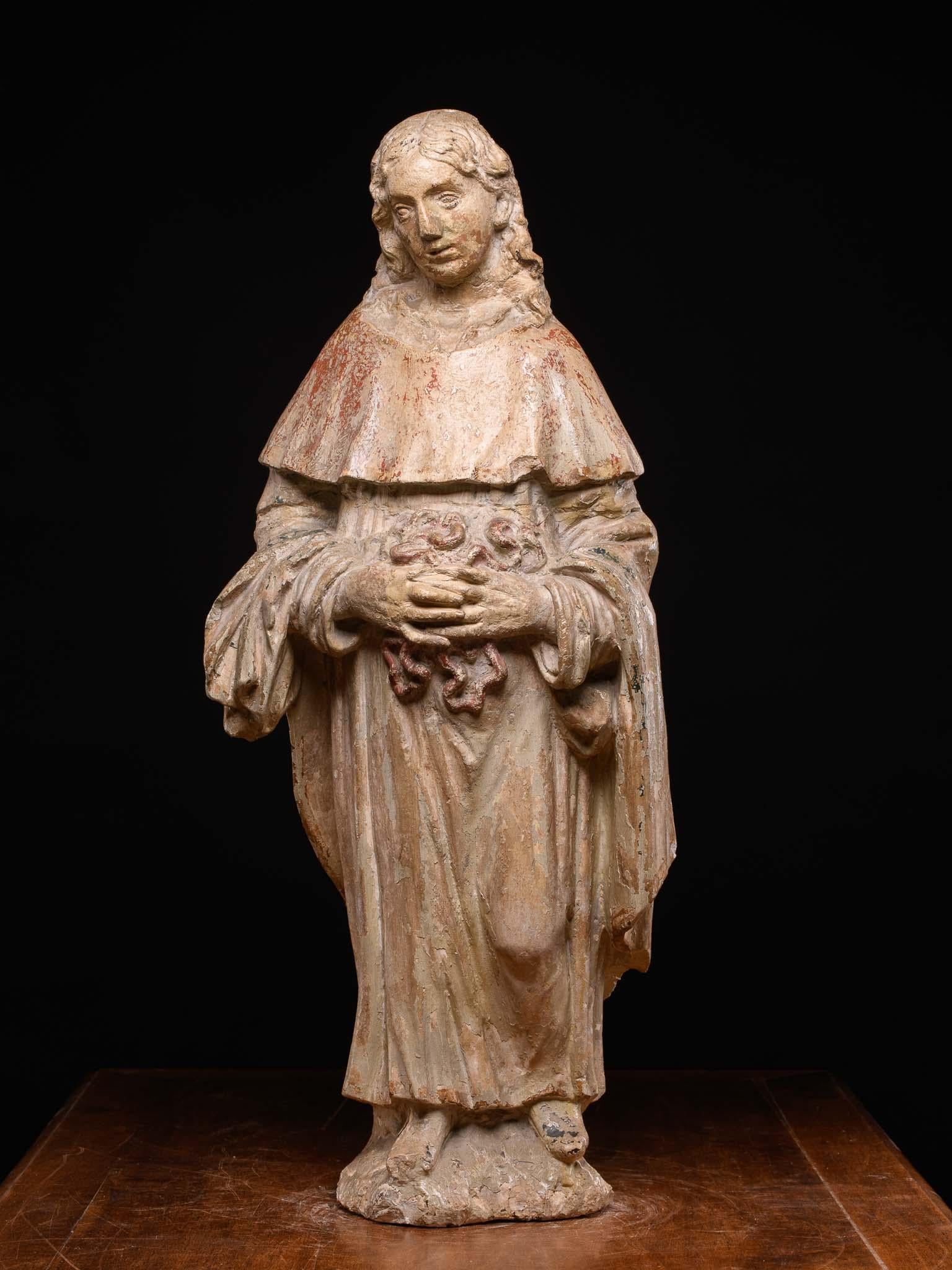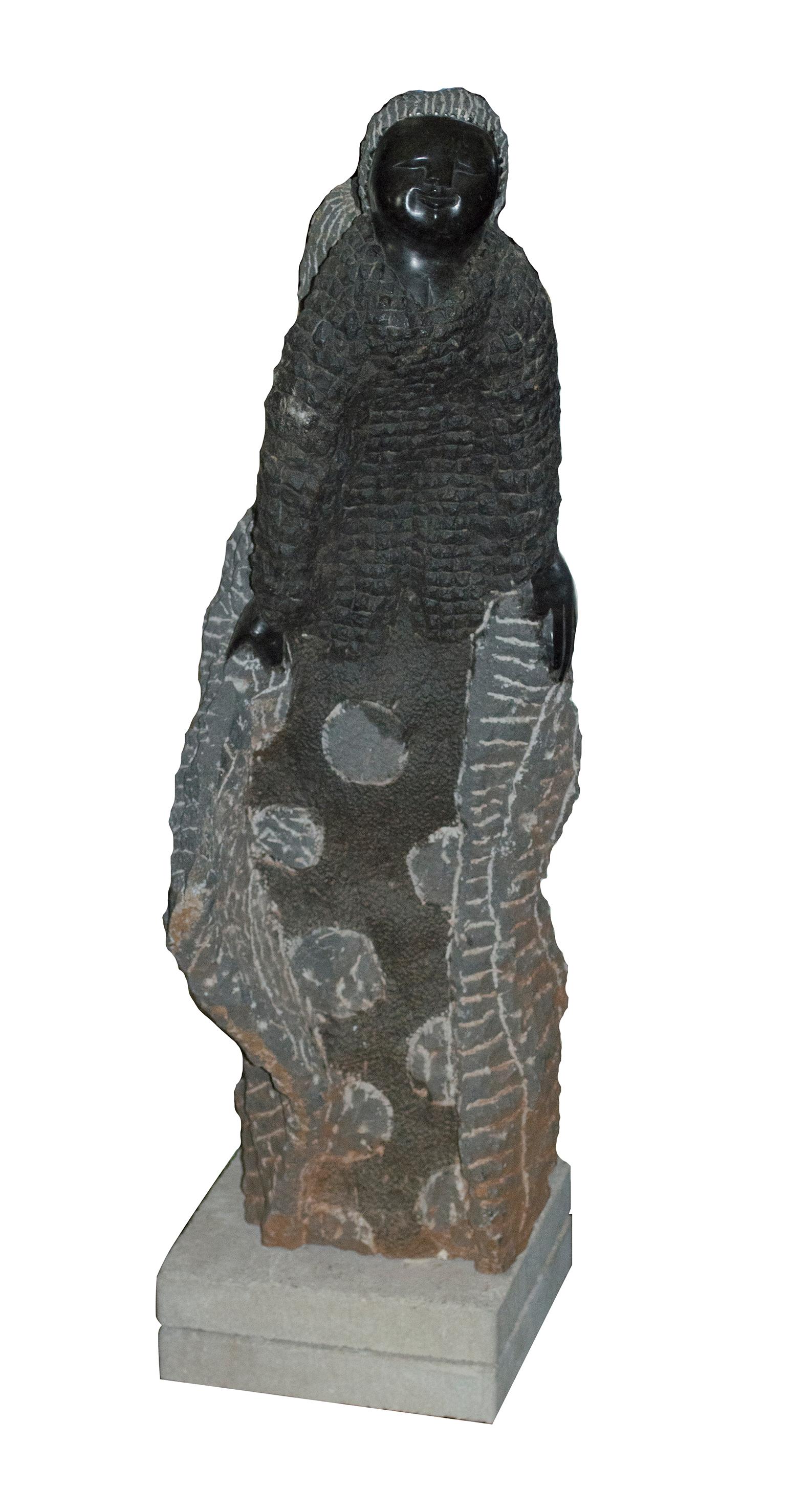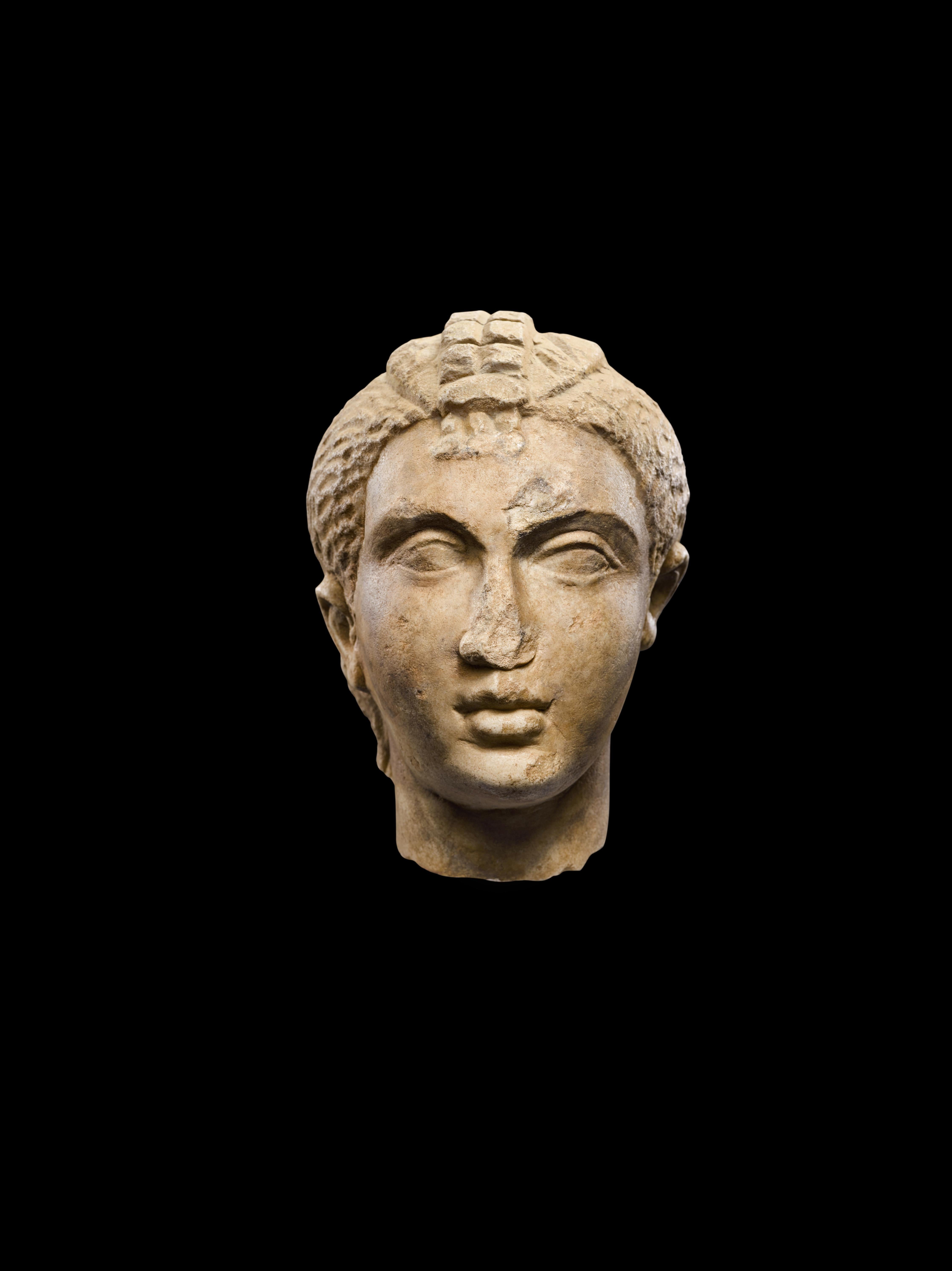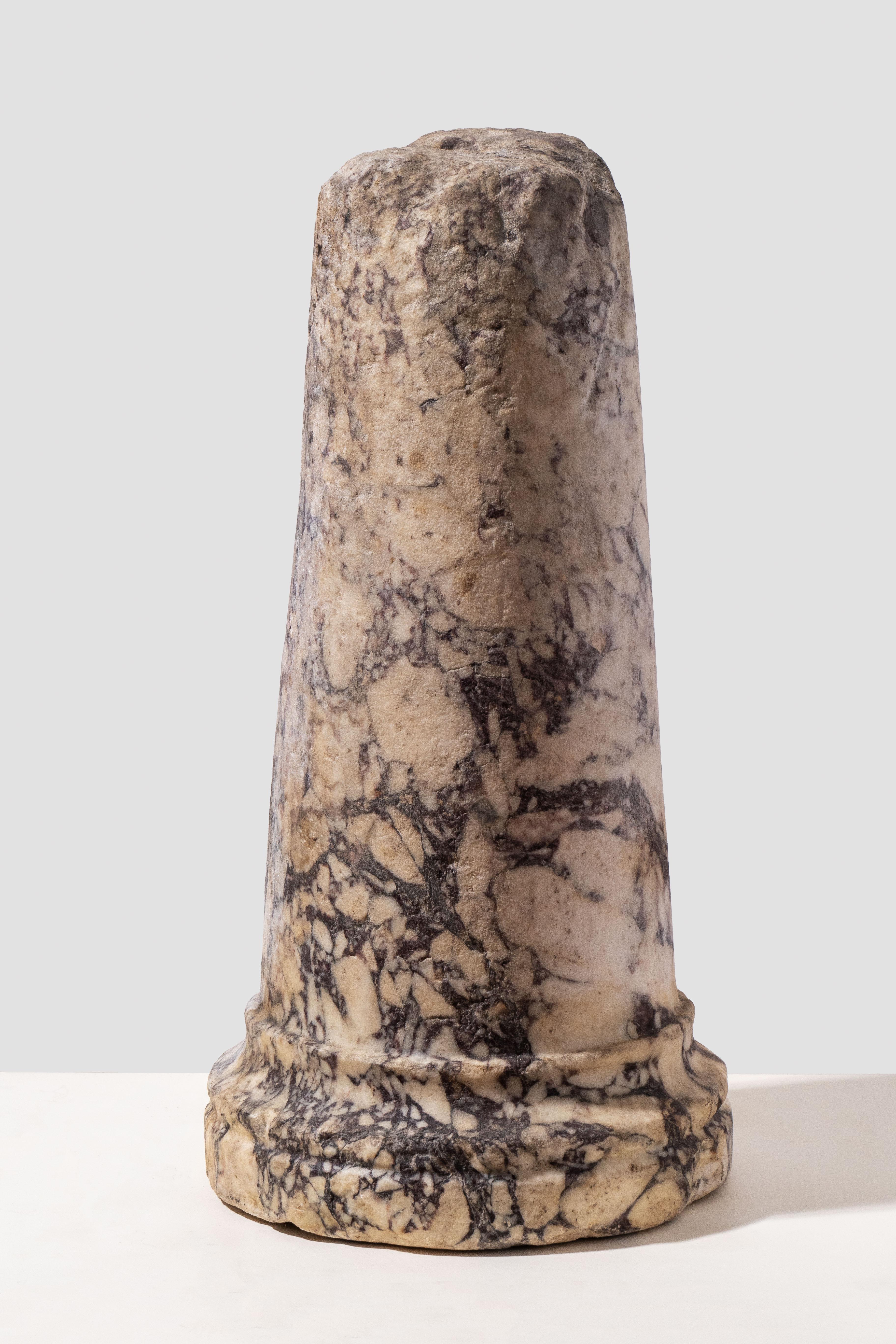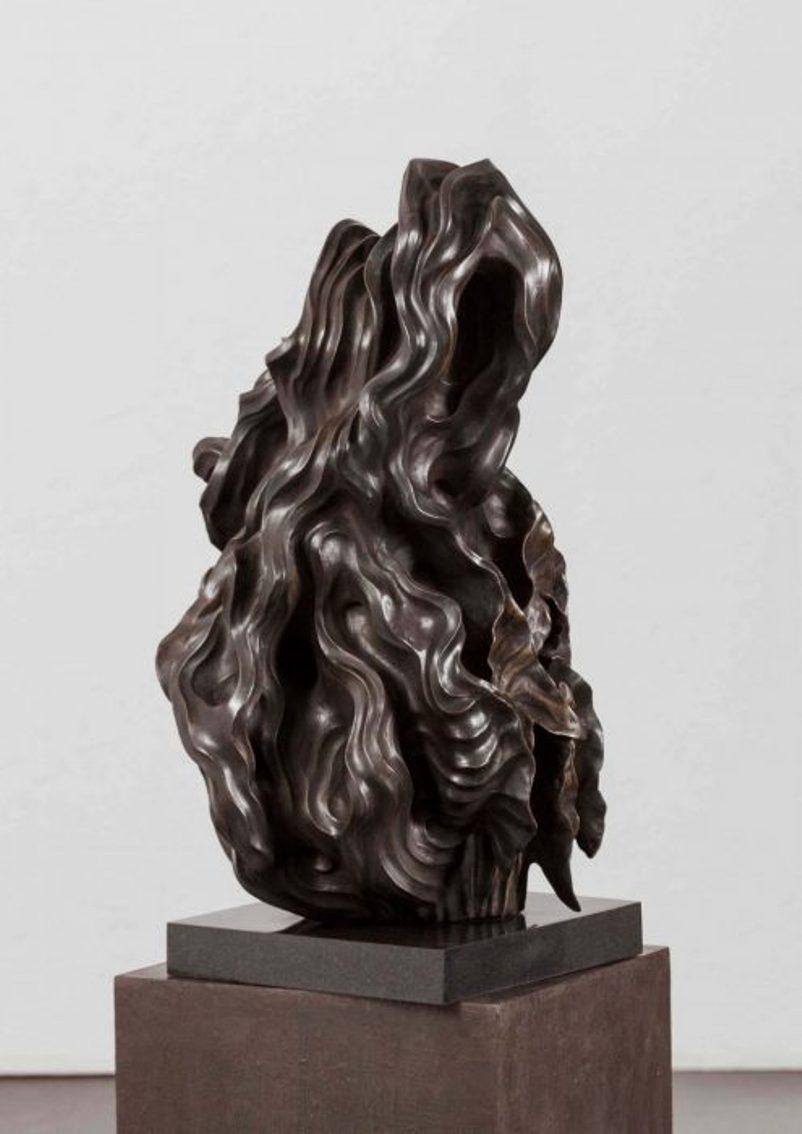Items Similar to Bariba People, Benin, Rare Terracotta Ceremonial Altar Vessel.
Want more images or videos?
Request additional images or videos from the seller
1 of 5
UnknownBariba People, Benin, Rare Terracotta Ceremonial Altar Vessel. Unknown
Unknown
About the Item
This pottery vessel, embellished with high relief figures, was made by women of the ethnic group of the Bariba (or Baatonu) in the northern provinces of Benin. The Bariba potters passed their trade from mother to daughter. They didn’t make their vessels on a pottery wheel but kneaded them by hand. The raw material they used was river clay. Various pieces of pottery were used in ceremonies by spirit mediums. The disc shape mouth of the pot was used as a fire basin. The light was produced with the help of balls of cotton or wool, soaked in shea butter and lit with fire. Yoruba influence is reflected in the figural pottery of the Bariba. The strong emphasis on the female figures’ breasts points to a fertility cult.
- Creation Year:Unknown
- Dimensions:Height: 15.75 in (40 cm)Width: 9.06 in (23 cm)
- Medium:
- Period:
- Condition:
- Gallery Location:brussel, BE
- Reference Number:
About the Seller
5.0
Vetted Seller
These experienced sellers undergo a comprehensive evaluation by our team of in-house experts.
1stDibs seller since 2021
13 sales on 1stDibs
Typical response time: 4 hours
- ShippingRetrieving quote...Ships From: leuven, Belgium
- Return PolicyA return for this item may be initiated within 3 days of delivery.
More From This SellerView All
- 17th C Stone statue of Saint Erasmus or Saint ElmoLocated in brussel, BESaint Erasmus or Saint Elmo (Antioch, ca. 240 – Formia, 303) was an Italian bishop and patron saint of the sailors. His attribute was the capstan, a winch on which the anchor chains were rolled up. He died as a martyr for his faith, and his bones were transferred to Gaeta in the 9th century, where they are kept in the cathedral to this day. The electric phenomenon of Saint Elmus fire is named after Saint Erasmus and the 16th C humanist Desiderius Erasmus. Little is known with certainty about Saint Erasmus' life. However, many legends may have been passed on orally until - no older writings are known with certainty. His birthplace was in present-day Syria. However, the persecution of Christians under Emperor Diocletian forced him to flee to Mount Lebanon...Category
17th Century Baroque Figurative Sculptures
MaterialsStone
- Standing Human Skeleton in Wood, South East AsiaLocated in brussel, BEThe highly expressive wooden skeleton was carved and polychromed in the early 20th century in Burma, today's Myanmar. Unlike many sculptures from that region, his one is not directly...Category
20th Century Other Art Style Figurative Sculptures
MaterialsWood
- Antique Circus Clown with poseable arms and caracterful smileLocated in brussel, BEAn intriguing example of a fully articulated circus puppet marionette, in the form of a clown. This figure is fully articulated with iron strings support...Category
20th Century Other Art Style Figurative Sculptures
MaterialsWood
- 19th, Bronze Patinated statue of FencerLocated in brussel, BEGodefroid Devreese(19 August 1861 – 31 August 1941) was a Belgian sculptor. His work was part of the sculpture event in the art competition at the Olympics. He first studied with his...Category
19th Century Figurative Sculptures
MaterialsMetal
- Sculptured polychromed Female modelled Head from artist workshop.Located in brussel, BEGustave Fontaine (Etterbeek 1877-1952 Brussels) was a sculptor–painter. He took courses in Saint-Josse-ten-Noode and continued his training at the Aca...Category
20th Century Art Deco Figurative Sculptures
MaterialsPlaster
- Madonna and Child, carved and polychrome wood, Early 18th C, South of FranceLocated in brussel, BEAlthough the 18th century, the period of the Enlightenment in France, spawned thinkers who criticized the privileges of the clergy and the truthfulness of certain dogmas, the Roman Catholic faith was very much present in everyday life. Since king Louis XIV had issued the Edict of Fontainebleau in 1685, Protestantism was banned from the country. This Madonna with child illustrates the daily practice of faith. Like many 18th-century Madonna statues...Category
18th Century French School Figurative Sculptures
MaterialsWood
You May Also Like
- Africa Female Artist Stone Sculpture Figure Celebrate Modern Contemporary SignedBy Colleen MadamombeLocated in Milwaukee, WI"Celebrations (C-56)" is an original black serpentine stone sculpture by Colleen Madamombe. The artist signed the piece, and it weighs 228 pounds. This piece features a woman with a ...Category
Early 2000s Contemporary Figurative Sculptures
MaterialsStone
- ANCIENT ROMAN MARBLE SCULPTURE PORTRAIT HEAD OF A GIRLLocated in Milan, ITPORTRAIT HEAD OF A GIRL Rome, circa 2nd/3rd century A.D. Marble height 18.4 cm height 7 1/4 in Provenance: Sotheby's, London, May 23rd, 1988, no. 240,...Category
15th Century and Earlier Figurative Sculptures
MaterialsMarble
- ANTIQUE ITALIAN ARCHITECTURAL FRAGMENT OF PLINTH IN 'BRECCIA MEDICEA' MARBLELocated in Milan, ITBRECCIA FRAGMENT PLINTH Italy, 18th Century Breccia medicea 55 x d 25 cm 21 3/4 x d 9 3/4 inCategory
18th Century More Art
MaterialsMarble
- Leaves - The Mystical Link, Liquid Metal Coating, Composite of Stone GlassLocated in Kolkata, West BengalDivyendu Anand - Leaves - The Mystical Link - H 32 x W 20 x D 18 inches Edition 3/8 Liquid Metal Coating over Composite of Stone Glass and Polyester Res...Category
2010s Contemporary Figurative Sculptures
MaterialsGranite, Marble, Stone, Metal
- Yin-Yang, The State of Flux and Beyond, Liquid Metal Coating Over CompositeLocated in Kolkata, West BengalDivyendu Anand - Yin-Yang, The State of Flux and Beyond - H 26 x W 24 x D 13.5 inches Edition 7/8 Liquid Metal Coating Over Composite of Stone Glass and...Category
2010s Contemporary Figurative Sculptures
MaterialsStone, Granite, Metal
- Mystical Woodland, Metal Skin Over Composite Stone Glass, Polyester ResinLocated in Kolkata, West BengalDivyendu Anand - Mystical Woodland - H 20.5 x W 28 x D 10 inches Edition 3/9 Metal Skin Over Composite of Stone Glass and Polyester Resin, White Marble...Category
2010s Contemporary Figurative Sculptures
MaterialsStone, Marble, Metal
